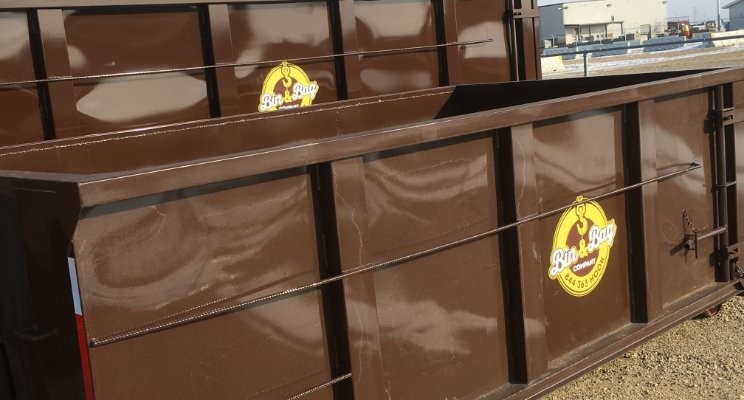Introduction
Selecting the right roll-off dumpster size is crucial for the success of any construction, renovation, or clean-up project. An appropriately sized dumpster ensures efficient waste management, minimizes costs, and keeps your project site clean and safe. However, choosing the correct dumpster size can be challenging due to the variety of options available and the specific needs of different projects.
In this article, we will discuss the importance of selecting the right dumpster size, the factors to consider when making your choice, and a detailed guide on the most common dumpster sizes and their best uses. By understanding these aspects, you can make informed decisions that enhance your project’s efficiency and sustainability.
The Importance of Choosing the Right Dumpster Size
Choosing the correct dumpster size is essential for several reasons. Firstly, it ensures efficient waste management. A dumpster that is too small will require frequent emptying, causing delays and increasing labor costs. On the other hand, an oversized dumpster may be a waste of space and money.
Secondly, the right dumpster size helps maintain a clean and safe worksite. Properly contained waste reduces the risk of accidents, such as tripping over debris or exposure to hazardous materials. It also helps prevent environmental contamination by ensuring that waste is stored and disposed of correctly.
Thirdly, selecting the appropriate dumpster size can lead to cost savings. Renting a dumpster that matches your project’s waste output reduces the frequency of pickups and the overall rental cost. It also ensures that you are not paying for unused space, which can be especially important for budget-conscious projects.
Factors to Consider When Choosing a Dumpster Size
When selecting a roll-off dumpster size, consider the following factors to ensure you make the right choice for your project:
- Project Type and Scope
-
- The type and scope of your project will significantly impact the amount of waste generated. For example, a small home renovation will produce less waste than a large construction site or a major clean-out. Understanding the scale of your project helps determine the appropriate dumpster size.
- Waste Type
-
-
- Different types of waste require different handling and disposal methods. Construction debris, household junk, yard waste, and hazardous materials all have unique characteristics that influence the size and type of dumpster needed. Knowing the waste type helps ensure you choose a dumpster that can accommodate it safely and efficiently.
-
- Waste Volume
-
-
- Estimating the volume of waste your project will generate is crucial. This estimate can be based on previous projects, professional advice, or industry standards. Having an accurate idea of waste volume helps you select a dumpster size that can handle the load without requiring frequent emptying.
-
- Space Availability
-
-
- The available space at your project site for placing the dumpster is another important consideration. Ensure that the location is accessible for the delivery and pickup of the dumpster and that it does not obstruct work areas or pathways. A larger dumpster may be ideal, but only if you have sufficient space to accommodate it.
-
- Duration of the Project
-
- The length of time you will need the dumpster also influences your choice. Longer projects may benefit from larger dumpsters to reduce the frequency of emptying, while shorter projects might require smaller, more manageable containers.
Common Roll-Off Dumpster Sizes and Their Uses
Understanding the common roll-off dumpster sizes and their best uses can help you make an informed decision. Here are some of the most popular sizes and the types of projects they are suitable for:
1. 10-Yard Roll-Off Dumpster
- Dimensions: Typically 10 feet long, 7 feet wide, and 4 feet high.
- Best Uses: Small home clean-outs, minor renovation projects, yard waste disposal.
- Description: A 10-yard dumpster is perfect for small-scale projects that generate limited waste. It is easy to maneuver and fits comfortably in most residential driveways.
2. 12-Yard Roll-Off Dumpster
- Dimensions: Typically 12 feet long, 8 feet wide, and 4 feet high.
- Best Uses: Small to medium-sized renovation projects, household junk removal, small roofing projects.
- Description: Slightly larger than the 10-yard option, the 12-yard dumpster provides additional capacity while remaining compact enough for residential use.
3. 15-Yard Roll-Off Dumpster
- Dimensions: Typically 16 feet long, 8 feet wide, and 4 feet high.
- Best Uses: Medium-sized home clean-outs, small construction projects, larger yard waste disposal.
- Description: The 15-yard dumpster is a versatile option that offers a balance between capacity and convenience, suitable for a range of medium-sized projects.
4. 20-Yard Roll-Off Dumpster
- Dimensions: Typically 22 feet long, 8 feet wide, and 4.5 feet high.
- Best Uses: Large home renovations, roofing projects, landscaping projects.
- Description: The 20-yard dumpster is one of the most popular sizes due to its capacity and flexibility. It can handle a significant amount of waste, making it ideal for larger residential and commercial projects.
5. 30-Yard Roll-Off Dumpster
- Dimensions: Typically 22 feet long, 8 feet wide, and 6 feet high.
- Best Uses: Major construction projects, large-scale clean-outs, demolition debris.
- Description: The 30-yard dumpster offers substantial capacity for large projects. It is well-suited for construction sites and extensive renovations that generate a high volume of waste.
6. 40-Yard Roll-Off Dumpster
- Dimensions: Typically 22 feet long, 8 feet wide, and 8 feet high.
- Best Uses: Large demolition projects, major construction sites, commercial clean-outs.
- Description: The 40-yard dumpster is the largest option available, providing maximum capacity for the most demanding projects. It is ideal for projects that generate massive amounts of waste and require robust waste management solutions.
Tips for Selecting the Right Dumpster Size
Choosing the right dumpster rental Pearl River size can be straightforward if you follow these practical tips:
- Consult with Professionals
-
-
- Waste removal companies have extensive experience in handling various types of projects and can provide valuable advice on the appropriate dumpster size. Don’t hesitate to consult with them to ensure you make the right choice.
-
- Overestimate When in Doubt
-
- If you’re unsure about the exact volume of waste your project will produce, it’s better to overestimate. Choosing a slightly larger dumpster ensures you have enough capacity and avoids the inconvenience and cost of arranging additional pickups.
- Consider Future Needs
-
-
- Think about the entire duration of your project and any potential increases in waste volume. Planning for future needs can help you avoid interruptions and maintain smooth operations throughout the project.
-
- Review Project Plans
-
-
- Detailed project plans can provide insights into the types and volumes of waste you will generate. Reviewing these plans can help you select the most appropriate dumpster size based on your specific requirements.
-
- Evaluate Site Conditions
-
- Assess the conditions at your project site, including space availability, access points, and any potential obstacles. These factors can influence the size and type of dumpster that will work best for your project.
Conclusion
Selecting the right roll-off dumpster size is a crucial aspect of efficient waste management for any construction, renovation, or clean-up project. By considering factors such as project type, waste type, volume, space availability, and project duration, you can make an informed decision that enhances your project’s efficiency and sustainability.
Understanding the common dumpster sizes and their best uses further aids in making the right choice. From small 10-yard dumpsters for minor clean-outs to large 40-yard dumpsters for major construction sites, each size has its specific applications and benefits.
By following practical tips and consulting with waste removal professionals, you can ensure that you select the most appropriate dumpster size for your needs. This proactive approach not only helps maintain a clean and safe worksite but also leads to cost savings and improved project outcomes.
Efficient waste removal is essential for the success of any project, and choosing the right dumpster size plays a pivotal role in achieving this goal. Make informed decisions, plan ahead, and leverage professional advice to enhance your waste management efforts and contribute to a cleaner, more sustainable environment.


